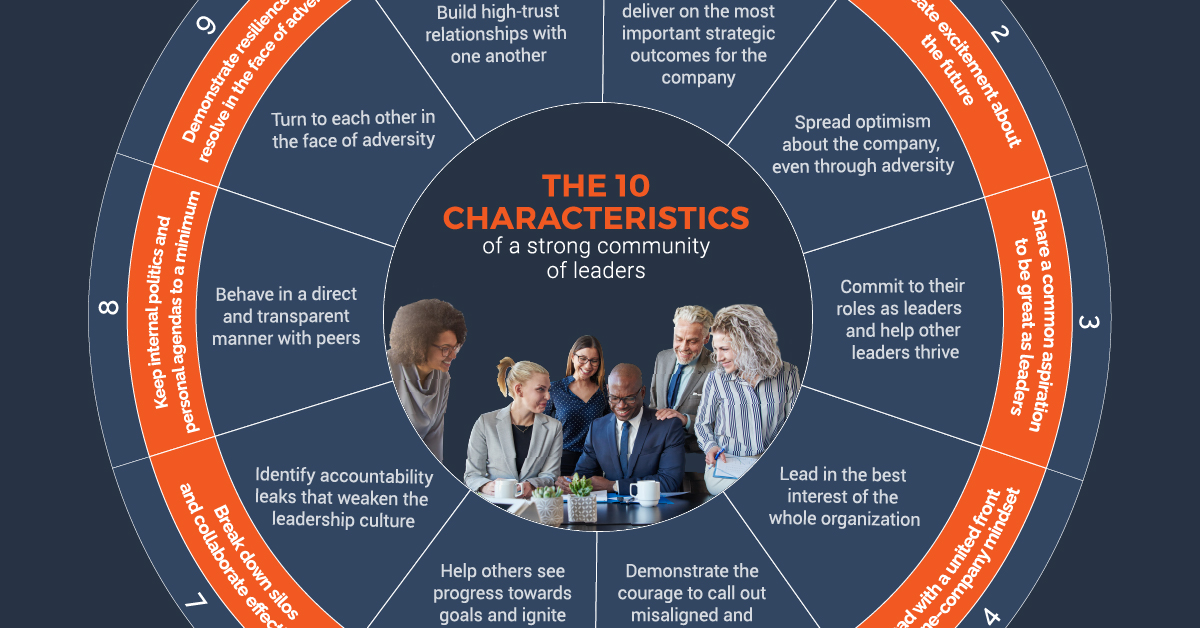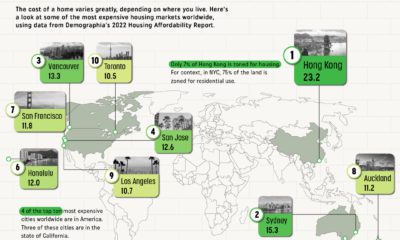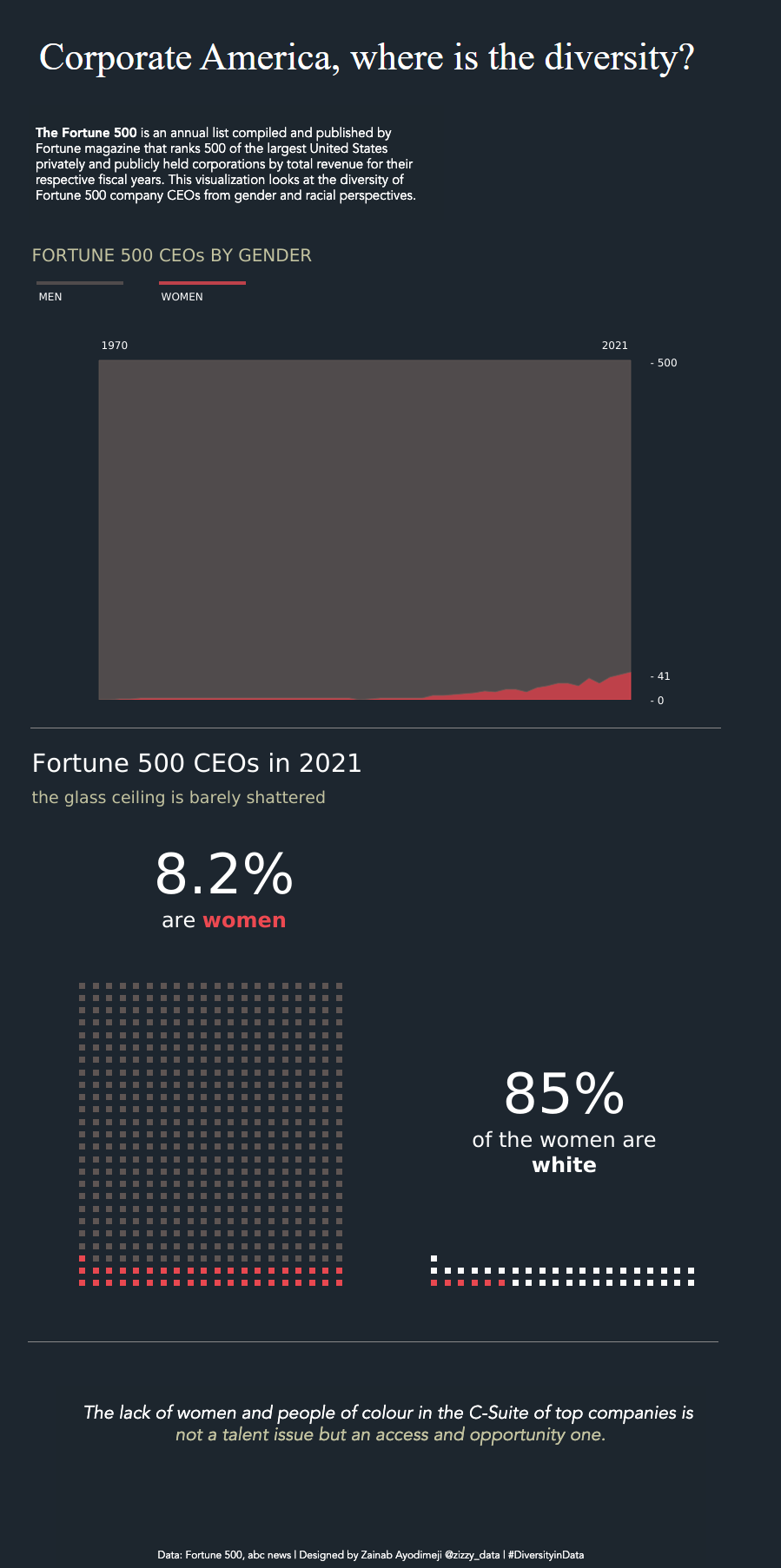Leadership
10 Ways You Can Build Leadership Communities in a Hybrid World of Work
The world has never been more connected. Yet many of us feel more disconnected than ever before.
In particular, CEOs and managers can often feel isolated from their peers, and therefore crave a greater sense of community and belonging. This lack of social connection can have a detrimental impact on both them and their team—putting the future of their company at risk.
Leading in a Hybrid World of Work
This infographic from bestselling author Vince Molinaro dives into the ways you can build a strong community of leaders in your organization, enabling you to more successfully execute on strategy, drive growth, and deliver results.

>>Download Dr.Vince Molinaro’s Community Builder Ebook Today
The Critical Need for Leadership Communities
In today’s world, many leaders have been conditioned to work and lead in a way that is individualistic and hyper-competitive, which leads to problematic outcomes including:
- Limiting innovative ideas
- Causing overwhelm and stress
- Limiting diversity and a sense of inclusion
- Promoting a macho culture
- Creating heroes and zeros in organizations
This outdated model breeds a weak leadership culture. Even though leadership expectations are higher than ever, very few companies boast a strong leadership culture. In fact, just 15% of companies have the culture they need to succeed.
What does a weak leadership look like?
Weak Leadership Cultures
When leaders demonstrate the following behaviors, organizations are at risk of developing a weak leadership culture:
- They lack clarity around strategic priorities.
- They fail to inspire the people they lead.
- They tolerate ineffective and mediocre leadership.
- They demonstrate animosity for the success of other leads, teams, and departments.
- They work at cross-purposes with each other.
- They prop themselves up while downplaying the contribution of others.
- They don’t engage stakeholders.
- They regularly badmouth others and throw colleagues under the bus.
- They withhold information as a way to retain power over their peers.
- They act as bystanders when colleagues need help.
When these negative dynamics become apparent, organizations pay a significant price. According to a report from Qualtrics, 40% of managers see a decline in their mental health, while another study shows that 66% of leaders have checked out entirely.
It is clear that building a strong community of leaders has become critical as the world continues to become even more complex and uncertain. Let’s dive into some of the ways you can build a greater sense of belonging in your organization today.
The Characteristics of Leadership Communities
Here are the 10 characteristics and behaviors that promote a strong community of leaders. Does this describe your organization’s leadership culture?
| Characteristic | Aligned Behavior |
|---|---|
| 1. Have clarity on the strategic direction of the organization | Be determined to deliver on the most important strategic outcomes for the company |
| 2. Create excitement about the future | Spread optimism about the company, even through adversity |
| 3. Share a common aspiration to be great as leaders | Commit to their roles as leaders and help other leaders thrive |
| 4. Lead with a united front and a one-company mindset | Lead in the best interest of the whole organization |
| 5. Hold each other accountable by calling out unproductive leadership behavior | Demonstrate the courage to call out misaligned and unacceptable behaviors |
| 6. Celebrate success and key milestones | Ignite passion by recognizing others and showing progress towards goals |
| 7. Break down silos and collaborate effectively | Identify accountability gaps that weaken the leadership culture |
| 8. Keep internal politics and personal agendas to a minimum | Behave in a direct and transparent manner with peers |
| 9. Demonstrate resilience and resolve in the face of adversity | Turn to each other while navigating tough challenges |
| 10. Support one another and have each other’s backs | Build high-trust relationships with one another |
Most leaders want to be in an environment where there is real clarity, alignment, commitment, and mutual support—it just takes one accountable leader to make it happen.
The Benefits to Creating a Strong Community of Leaders
If done right, the effects of building a strong community of leaders can be extraordinary:
- Promotes a stronger sense of belonging.
- Allows for greater knowledge sharing.
- Encourages higher levels of performance.
- Creates a culture of accountability.
- Improves employee engagement.
Moreover, research shows that employee engagement is directly linked to a company’s culture and value system. In fact, employee engagement levels can reach up to 72% when managers work well with each other.
With the working world transforming before our very eyes, it’s time to establish a new leadership contract so that CEOs and managers can lead their organizations successfully into the future.
Do you have what it takes to be a community builder? Download your Ebook to discover practical strategies you can apply today.
Culture
Visualizing Gender Diversity in Corporate America
The gender gap in corporate America is still prevalent, especially in leadership roles. In 2021, only 8.2% of Fortune 500 CEOs were female.

There’s been a massive push to increase diversity and inclusion in the workplace.
However, it appears corporate America still has a ways to go, particularly when it comes to diverse representation in corporate leadership roles. In 2021, only 8.2% of Fortune 500 CEOs were female. Of those females, 85% of them were white.
This graphic by Zainab Ayodimeji highlights the current state of diversity in corporate America, reminding us that there are still significant gender and racial gaps.
Five Decades of Fortune 500 CEOs
Since 1955, Fortune Magazine has released its annual Fortune 500 list that ranks the 500 largest U.S. companies, ranked by total revenue earned each fiscal year.
For the first 17 years of its publication, there were no female CEOs on the Fortune 500. Then in 1972, Katharine Graham became CEO of the Washington Post, making her the first-ever female CEO of a Fortune 500 company.
Following Graham, a few other women joined the ranks, such as Marion Sandler, co-CEO of Golden West Financial Corporation, and Linda Wachner, CEO of Warnaco Group. But apart from those few outliers, Fortune 500 CEOs remained almost exclusively male for the next few decades.
At the turn of the millennium, things started to change. Women-led companies started to appear more frequently on the Fortune 500. Here’s a breakdown that shows the number of women CEOs on the list, from 1999 to 2021:
| Year | Fortune 500 # of Women CEOs | % of Total |
|---|---|---|
| 1999 | 2 | 0.4% |
| 2000 | 2 | 0.4% |
| 2001 | 3 | 0.6% |
| 2002 | 7 | 1.4% |
| 2003 | 7 | 1.4% |
| 2004 | 8 | 1.6% |
| 2005 | 9 | 1.8% |
| 2006 | 10 | 2.0% |
| 2007 | 13 | 2.6% |
| 2008 | 12 | 2.4% |
| 2009 | 15 | 3.0% |
| 2010 | 15 | 3.0% |
| 2011 | 12 | 2.4% |
| 2012 | 18 | 3.6% |
| 2013 | 20 | 4.0% |
| 2014 | 24 | 4.8% |
| 2015 | 24 | 4.8% |
| 2016 | 21 | 4.2% |
| 2017 | 32 | 6.4% |
| 2018 | 24 | 4.8% |
| 2019 | 33 | 6.6% |
| 2020 | 39 | 7.8% |
| 2021 | 41 | 8.2% |
Slowly, women of color started to appear on the list as well. In 1999, Andrea Jung, the CEO of Avon, became the first East Asian female CEO in the Fortune 500. And in 2009, Xerox CEO Ursula Burns was the first Black woman to become CEO of a Fortune 500 company.
By 2021, 41 of the Fortune 500 companies were led by women—8.2% of the overall list.
While this increasing total is a clear trend, it’s important to note that women make up nearly 50% of the global population, meaning genders are still not equally represented in corporate leadership.
The Financial Benefits of Diverse Workplaces
Along with the number of societal and cultural benefits that come with a diverse workplace, research indicates that diversity can also be financially beneficial to corporations, and enhance a company’s bottom line.
A study by the Council of Foreign Relations found that gender equality in the workforce could add up to $28 trillion in global GDP.
According to the Council of Foreign Relations, a number of policy changes are needed to help close the gender gap in the workforce, such as legislation to promote women’s access to capital and financial services, or tax credits for childcare support.
-

 Energy2 weeks ago
Energy2 weeks agoWho’s Still Buying Russian Fossil Fuels in 2023?
-

 VC+4 days ago
VC+4 days agoWhat’s New on VC+ in July
-

 Investor Education4 weeks ago
Investor Education4 weeks agoVisualizing BlackRock’s Top Equity Holdings
-

 Technology2 weeks ago
Technology2 weeks agoMeet the Competing Apps Battling for Twitter’s Market Share
-

 Public Opinion16 hours ago
Public Opinion16 hours agoHow Do Chinese Citizens Feel About Other Countries?
-

 Markets4 weeks ago
Markets4 weeks agoVisualizing Every Company on the S&P 500 Index
-

 Markets2 weeks ago
Markets2 weeks agoVisualizing 1 Billion Square Feet of Empty Office Space
-

 Energy4 weeks ago
Energy4 weeks agoLife Cycle Emissions: EVs vs. Combustion Engine Vehicles













 Creator Program
Creator Program

